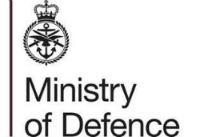Air near miss
The Daily Mirror and other regional media outlets have offered stories relating to an Air Proximity report from last year and much of the commentary has been sensationalised.To be clear, this event was not ‘the worst single near miss in Britain due to the huge cost of the aircraft involved’ but rather an event of good airmanship by RAF crews. Occurring in ‘free airspace’, the Airprox report confirmed the RAF aircrew were keeping a good lookout and therefore had been able to take effective action.
For clarity the definition of an Airprox is a situation in which, in the opinion of a pilot, the distance between aircraft was such that the safety of the aircraft involved was or may have been compromised. This does not mean an ‘imminent mid-air incident’ / possible collision of any sort. The routine nature of events such as this was confirmed by the UK Airprox Board board who rated this incident as a low risk Category C event which means there was deemed to be no risk of collision.
Defence spending
The Financial Times this morning writes that the UK's military equipment programme is at a “crunch point” and that the projects most vulnerable to cuts (type-26 ships, trident successor, future combat air system) are those most critical to maintaining industrial capacity in the UK. The paper also reports on the concerns voiced by the head of the US army yesterday about the effect of spending cuts on the UK's armed forces.
We do not agree with this assessment as over the next decade we are committed to spending £163 billion on equipment and equipment support to keep Britain safe. That includes new strike fighters; more surveillance aircraft; hunter killer submarines; two aircraft carriers; and the most advanced armoured vehicles.
With the second largest defence budget in NATO and the largest in Europe, the Government is also committed to spending 2% of GDP on defence. Decisions on spending after the financial year 2015/16 will be determined in the next spending review.
Nuclear submarine safety
More than 450 nuclear safety incidents have been reported at HM Naval Base Clyde, where Britain’s Trident nuclear armed submarines are housed, according to figures in a recent PQ writes the Daily Mirror today. The piece reports that the breaches, some of which caused exposure to radiation, involved 71 fires and equipment failures between 2008/9 and 2013/14 and that in the last year the number of incidents had gone up from 68 to 107.
In fact none of the incidents reported posed any risk to the health of our personnel, or to any members of the public. Our rigorous reporting system shows how seriously Defence takes all aspects of nuclear safety and where necessary, measures are put in place to prevent a recurrence.
Afghan interpreters
The Times (p20) reports that the Taliban tried to murder an interpreter who worked for UK special forces in Afghanistan. The interpreter claimed he was shot and injured in Khost and urged the British government to relocate him and his family. The paper writes that if proven, it would be the first evidence of a former employee of the UKmilitary in Afghanistan being wounded in a targeted attack since the end of UK combat operations.
We take the protection of our local staff and reports of threats or intimidation very seriously and we cannot comment on details specific to this case.
Our work in Afghanistan was challenging, risky and for those who worked alongside us as patrol interpreters and translators, sometimes dangerous. We pay tribute to those who have made the ultimate sacrifice or have been injured while working with us.
Image of the day
![HMS Duncan, the Royal Navy’s newest warship, sailed from Portsmouth today for her maiden deployment. The Type 45 destroyer will spend nine months working with allies in the Mediterranean, Middle East and Gulf to protect allied and merchant shipping and wider British interests in the region. The ship is armed with the highly sophisticated Sea Viper missile system able to track and engage several aircraft and missile targets at very high speed. In addition Duncan acts as a floating base for a Royal Navy Lynx Mark 8 maritime attack helicopter which can hunt submarines and surface ships or act in a search and rescue role. HMS Duncan will also carry both Royal Navy and Royal Marine boarding parties which can help to counter the threat from pirates, terrorists and smugglers. [Picture: Crown Copyright]](https://modmedia.blog.gov.uk/wp-content/uploads/sites/142/2015/03/HMS-Duncan-620x413.jpg)
Follow us on Twitter and don't forget to sign up for email alerts.
